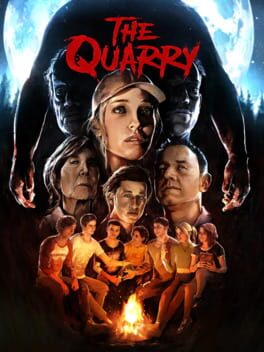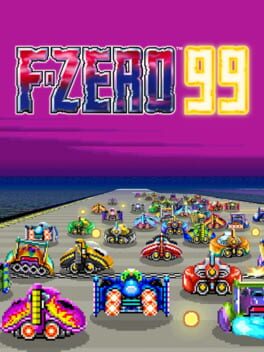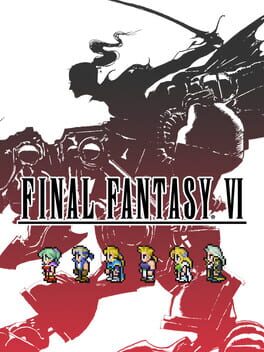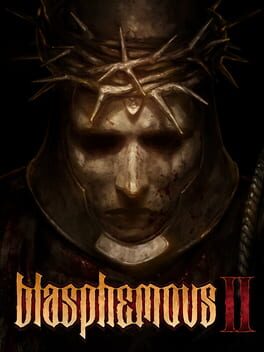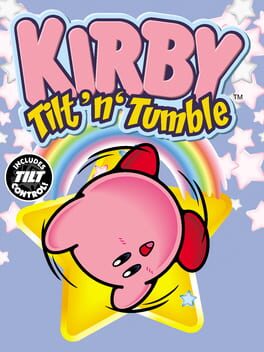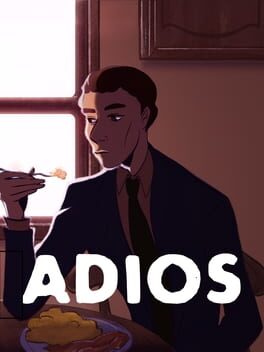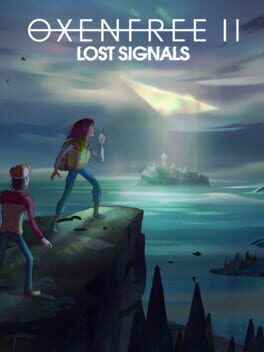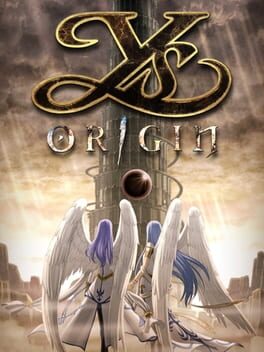VideoGameTim
BACKER
2020
A masterpiece in every sense of the word, Larian have really outdone themselves with Baldur's Gate 3. Rooted firmly in DnD game systems and lore, it is a spectacular adventure from start to finish. The level of character expression through character progression/creation, dialogue choices, exploration, and combat is something that I haven't really encountered since well, Divinity Original Sin 2.
My playthrough was as a high-elf bard with a criminal background, and so as a result I ended up being a bit of a jack-of-all-trades. I could pass all persuasion/deception checks, a large pool of spells to utilize in and out of battle, and proficient with rapiers and crossbows as well. For your companions, each and every one of them has a compelling story arc (if they choose to stick around and you don't get them killed in battle). They may approve or disapprove of your actions throughout the game, but with all the variation of events there is high replay value even at ~100 hours in length.
This variation however can be hit or miss. While I have no doubt there are plenty of events I did not see throughout the game due to my choices (cool), there are some objectives that feel pretty obtuse. Either far out of the way, or requiring specific NPCs to talk to, needing to be done in a specific order, or just time sensitive. Some hidden stuff is all well and good, but some things almost feel like they require a guide to know how to do "properly". A fine line had to be walked for balancing long rests (which pass time in the world, but also restore all your character's health, spells, and trigger certain events).
Baldur's Gate 3 is a long adventure, but not a moment feels wasted. Each area is tightly designed and sprinkled with enough fast travel points and events where the player spends very little time just running around wasting time. Though the final act has its fair share of bugs, it is still a well crafted game that encompasses everything an RPG should be. The voice acting, the high-fantasy music, the atmosphere, the character and creature designs, the writing - BG3 is a treat that may just inspire me to give DnD yet another shot. In a year of plenty of tremendous video games, this is almost certainly going to be my game of the year.
My playthrough was as a high-elf bard with a criminal background, and so as a result I ended up being a bit of a jack-of-all-trades. I could pass all persuasion/deception checks, a large pool of spells to utilize in and out of battle, and proficient with rapiers and crossbows as well. For your companions, each and every one of them has a compelling story arc (if they choose to stick around and you don't get them killed in battle). They may approve or disapprove of your actions throughout the game, but with all the variation of events there is high replay value even at ~100 hours in length.
This variation however can be hit or miss. While I have no doubt there are plenty of events I did not see throughout the game due to my choices (cool), there are some objectives that feel pretty obtuse. Either far out of the way, or requiring specific NPCs to talk to, needing to be done in a specific order, or just time sensitive. Some hidden stuff is all well and good, but some things almost feel like they require a guide to know how to do "properly". A fine line had to be walked for balancing long rests (which pass time in the world, but also restore all your character's health, spells, and trigger certain events).
Baldur's Gate 3 is a long adventure, but not a moment feels wasted. Each area is tightly designed and sprinkled with enough fast travel points and events where the player spends very little time just running around wasting time. Though the final act has its fair share of bugs, it is still a well crafted game that encompasses everything an RPG should be. The voice acting, the high-fantasy music, the atmosphere, the character and creature designs, the writing - BG3 is a treat that may just inspire me to give DnD yet another shot. In a year of plenty of tremendous video games, this is almost certainly going to be my game of the year.
2022
Played through this in pretty well one sitting with a couple of friends over couch co-op. It's a solid "monster movie" narrative adventure as a group of twenty-something(?) camp counsellors try to survive a spooky night. Quite a lot of room for variation both in terms of choices and from failing or passing QTEs, with I imagine no small number of outcomes. Some of the dialogue and animations are a little stilted, and the FOV for the segments where you get to walk around as a character is WAY too zoomed in, but otherwise it's paced well for the most part and is an engaging enough story. I dunno if I would want to play through it again solo, but definitely worth going through if you like watching horror movies with friends.
2023
Never got around to playing any of the F-Zero games, but this is pretty fun! Could definitely do with some more racers and tracks to choose from, but the standard mode and the mini/gran prix's are fun enough to hop on and play for a few rounds. Hopefully the playerbase sticks around so this can keep going like Tetris 99.
2022
Final Fantasy IV, V, and VI might be the perfect video game trilogy. Final Fantasy IV introduces a large cast of characters with a powerful, emotional story while still being pretty strict in terms of character customization. Final Fantasy V returns to a much smaller cast, but refines the job system from III into what might be the best gameplay in the franchise in terms of how free you are to do as you like. Final Fantasy VI combines the best of both worlds: A large, rich cast and a powerful plot, and just enough customization that characters do not lose their identity but still allowing for the player to break the game wide open. Final Fantasy VI is the quintessential JRPG experience.
I think the key standout point in FFVI is that there is always something going on. Each set piece in the story has some unique gimmick that makes it memorable in the plot, and very rarely (though it does still happen) are you in generic cave or generic mountain as part of the plot. It really feels like they doubled-down on the feeling of "adventure".
As I mentioned previously, FFVI also features a pretty robust "esper" system. Every character has their innate abilities (Locke can steal, Sabin can do fighting game inputs for special attacks, Strago is a blue mage, etc.) but on top of that, each character can equip an esper (a summon). Each esper comes with a list of spells that can be earned through winning battles, and so each party member can learn whichever spells they see fit. This is a good compromise from the job system in 3/5, because I didn't really feel like any of them stood out in those games because anyone could do the same things.
There's really a lot to love about FFVI. For everything I already knew about going in (because FFXIV can't go five minutes without referencing VI), there was still tons more yet to be discovered. It was the first of the classic FF games where I really set out to do as much of the optional stuff as I reasonably could. The story, cast, music, and exploration are all wonderful and it's easy to see why this is one of the most beloved in the franchise.
I think the key standout point in FFVI is that there is always something going on. Each set piece in the story has some unique gimmick that makes it memorable in the plot, and very rarely (though it does still happen) are you in generic cave or generic mountain as part of the plot. It really feels like they doubled-down on the feeling of "adventure".
As I mentioned previously, FFVI also features a pretty robust "esper" system. Every character has their innate abilities (Locke can steal, Sabin can do fighting game inputs for special attacks, Strago is a blue mage, etc.) but on top of that, each character can equip an esper (a summon). Each esper comes with a list of spells that can be earned through winning battles, and so each party member can learn whichever spells they see fit. This is a good compromise from the job system in 3/5, because I didn't really feel like any of them stood out in those games because anyone could do the same things.
There's really a lot to love about FFVI. For everything I already knew about going in (because FFXIV can't go five minutes without referencing VI), there was still tons more yet to be discovered. It was the first of the classic FF games where I really set out to do as much of the optional stuff as I reasonably could. The story, cast, music, and exploration are all wonderful and it's easy to see why this is one of the most beloved in the franchise.
Despite being a Fromsoft fan since 2013 when I first played through Dark Souls, I had not touched their longest running series before: Armored Core. With the release of Fires of Rubicon, I was excited to finally give it a try. For a litany of reasons, there is no doubt it is one of my favourite games of 2023 thus far.
Reason #1: The customization. You start your endeavour on Rubicon in a run-of-the-mill AC unit. Equipped with an assault rifle, some lock-on missiles, and an energy sword you have just enough to get by. As you complete more and more missions, you earn credits or perhaps even find new weapons and parts to customize your AC to your liking. Do you like lasers, bullets, plasma, pulse, melee weapons, or shields? You have two arm slots and two shoulder slots to augment your build as you see fit. What about your legs? Besides the standard bipedal choice, there's also spider legs that let you hover, tank legs for driving around, and reverse legs for high-manoeuvrability and spring jumping (my personal favourite). Often different missions will call for different leg choices for an easier time, but you can make due with your preferences to be sure. Every other part of the AC can be customized too, from the head to the arms to the boosters to the generator. All of the components make up what your AC can support and is capable of. And once that is all out of the way, how about the look? You can paint, shine, and weather each individual part to match the look you want, with each part also having several different channels to paint. You can also even create your own decals to paste all over your mech as you see fit.
Reason #2: It is absolutely fucking cool. There aren't enough games that give a great sense of scale but AC6 is certainly one of them. Like Xenoblade or the old God of War trilogy, you really feel how small you are compared to other massive objects both in the map and in the background, but it also reminds you how massive you are when you take cover behind an apartment complex that just barely reaches your height. The visual effects are stellar too with lots of explosions and lasers going off that contrast the bleak landscape. The game also features a fantastic cast of characters that are both fun to fight with and against, and a very intriguing overarching story which has been the best story-telling I've experienced from Fromsoft to date (admittedly not a high bar).
Reason #3: The mission variety. There is a good amount of missions in the game which all have you tackling pretty fun objectives and a stellar list of bosses as well. Some of them felt either too hard or too easy at times, but I imagine that's really all up to different builds being suited to different things, and how willing the player is to adapt. Longer missions require larger ammo counts (or maybe a melee weapon to conserve), whereas certain bosses are more susceptible to certain types of damage so you must plan accordingly. The game also features multiple endings, and while that may feel like a big commitment, your subsequent playthroughs move lightning quick with your end game builds and prior knowledge. They also do a respectable job of keeping each playthrough feeling fresh. Maybe the only minor complaint I have is that the game features a ranking system, but only when you reattempt missions through the replay menu. I would have felt a lot more inclined to get better ranks on missions if even my NG+ and beyond playthroughs just ranked my story attempts (this is a really minor thing though).
Overall, AC6 is a very cool and very fun game. Tons of weapons and builds to choose from with low commitment if you want to try something else, and the missions are just the right length where none feel too long. It really feels like we don't get a lot of mission-based games like this anymore from AAA developers and I hope to see more like this again.
Reason #1: The customization. You start your endeavour on Rubicon in a run-of-the-mill AC unit. Equipped with an assault rifle, some lock-on missiles, and an energy sword you have just enough to get by. As you complete more and more missions, you earn credits or perhaps even find new weapons and parts to customize your AC to your liking. Do you like lasers, bullets, plasma, pulse, melee weapons, or shields? You have two arm slots and two shoulder slots to augment your build as you see fit. What about your legs? Besides the standard bipedal choice, there's also spider legs that let you hover, tank legs for driving around, and reverse legs for high-manoeuvrability and spring jumping (my personal favourite). Often different missions will call for different leg choices for an easier time, but you can make due with your preferences to be sure. Every other part of the AC can be customized too, from the head to the arms to the boosters to the generator. All of the components make up what your AC can support and is capable of. And once that is all out of the way, how about the look? You can paint, shine, and weather each individual part to match the look you want, with each part also having several different channels to paint. You can also even create your own decals to paste all over your mech as you see fit.
Reason #2: It is absolutely fucking cool. There aren't enough games that give a great sense of scale but AC6 is certainly one of them. Like Xenoblade or the old God of War trilogy, you really feel how small you are compared to other massive objects both in the map and in the background, but it also reminds you how massive you are when you take cover behind an apartment complex that just barely reaches your height. The visual effects are stellar too with lots of explosions and lasers going off that contrast the bleak landscape. The game also features a fantastic cast of characters that are both fun to fight with and against, and a very intriguing overarching story which has been the best story-telling I've experienced from Fromsoft to date (admittedly not a high bar).
Reason #3: The mission variety. There is a good amount of missions in the game which all have you tackling pretty fun objectives and a stellar list of bosses as well. Some of them felt either too hard or too easy at times, but I imagine that's really all up to different builds being suited to different things, and how willing the player is to adapt. Longer missions require larger ammo counts (or maybe a melee weapon to conserve), whereas certain bosses are more susceptible to certain types of damage so you must plan accordingly. The game also features multiple endings, and while that may feel like a big commitment, your subsequent playthroughs move lightning quick with your end game builds and prior knowledge. They also do a respectable job of keeping each playthrough feeling fresh. Maybe the only minor complaint I have is that the game features a ranking system, but only when you reattempt missions through the replay menu. I would have felt a lot more inclined to get better ranks on missions if even my NG+ and beyond playthroughs just ranked my story attempts (this is a really minor thing though).
Overall, AC6 is a very cool and very fun game. Tons of weapons and builds to choose from with low commitment if you want to try something else, and the missions are just the right length where none feel too long. It really feels like we don't get a lot of mission-based games like this anymore from AAA developers and I hope to see more like this again.
2023
A dramatic step-up from it's predecessor, Blasphemous II set out to address every possible complaint about the first game with few caveats.
Most notably, the world just feels good to traverse. My largest issue with the first game was that the only method of fast travel were a handful of portals around the map which weren't enough to make backtracking feel anything more than a chore. This game has those portals too, but it also features some upgrades which allow you to get around much more easily, the earliest of which is a prayer which allows you to fast travel back to the central city at any time. You have your slide and normal jump to start off with as well, but as with all Metroidvania's you unlock more movement options as you progress through the game to reach more and more secrets and become more manoeuvrable in combat. I enjoyed it so much that I even set out to 100% the game and see all endings.
Another major new feature of this game is that you start the game with one of three weapons to choose from: a standard sword, a giant flail/hammer, and quick dual blades; each with their own gimmick and speed to adapt to different players' preferences. You eventually do get all of them throughout the course of the game too and can freely cycle through them, and what's more is they both offer some manner of exploration ability which means different players who take different weapons first will have different hidden paths open to them right away.
In general, I think the best way I can describe the game is that it is less oppressive. Spike pits no longer instantly kill you, the music is more upbeat, and for the most part, the game is easier. The last point isn't necessarily a great thing but overall I find the experience to be a nice compliment to the first game and one I overall spent more time playing. One more minor complaint is that the cutscenes are fully animated by a third-party studio, which is a shame because the ones in the first game were quite striking in the pixel art style. Still, there aren't many of them so it's hardly a massive detractor.
Overall, if you like Metroidvanias then Blasphemous II is absolutely worth your time. While the first game is still worth experiencing (at least a little bit), feel free to jump right into this one. Try out the spanish dub too!
Most notably, the world just feels good to traverse. My largest issue with the first game was that the only method of fast travel were a handful of portals around the map which weren't enough to make backtracking feel anything more than a chore. This game has those portals too, but it also features some upgrades which allow you to get around much more easily, the earliest of which is a prayer which allows you to fast travel back to the central city at any time. You have your slide and normal jump to start off with as well, but as with all Metroidvania's you unlock more movement options as you progress through the game to reach more and more secrets and become more manoeuvrable in combat. I enjoyed it so much that I even set out to 100% the game and see all endings.
Another major new feature of this game is that you start the game with one of three weapons to choose from: a standard sword, a giant flail/hammer, and quick dual blades; each with their own gimmick and speed to adapt to different players' preferences. You eventually do get all of them throughout the course of the game too and can freely cycle through them, and what's more is they both offer some manner of exploration ability which means different players who take different weapons first will have different hidden paths open to them right away.
In general, I think the best way I can describe the game is that it is less oppressive. Spike pits no longer instantly kill you, the music is more upbeat, and for the most part, the game is easier. The last point isn't necessarily a great thing but overall I find the experience to be a nice compliment to the first game and one I overall spent more time playing. One more minor complaint is that the cutscenes are fully animated by a third-party studio, which is a shame because the ones in the first game were quite striking in the pixel art style. Still, there aren't many of them so it's hardly a massive detractor.
Overall, if you like Metroidvanias then Blasphemous II is absolutely worth your time. While the first game is still worth experiencing (at least a little bit), feel free to jump right into this one. Try out the spanish dub too!
You know, in hindsight, I should have known better. A game purely reliant on gyro controls for your movement of a ball around many narrow courses where you can (and DEFINITELY WILL) fall off the track. I get it, Nintendo has always loved experimenting with motion controls. As another review here suggested, maybe this would actually be better on the actual Gameboy with less responsive gyro capabilities so it would be easier to handle. As it stands however on the Switch, it is far too easy to send Kirby off a cliff or over a jump at ever so slightly the wrong angle.
Despite being a utterly frustrating experience, it does still get a couple of points for effort. It is still well made, and it looks pretty good. While most of the boss fights are reskins of each other, the final one was pretty enjoyable at least. As another virtue of being a GameBoy game, it also has some positively CRUNCHY audio (especially on Kirby's lines) so be prepared to hear some garbled screams or even drowning(!) sound effects that sound straight out of the GameBoy speakers.
Overall, I recommend you do not play this. But if you absolutely must (perhaps out of a love for Kirby), I recommend being prepared to abuse the NSO rewind features if that's how you're playing it.
Despite being a utterly frustrating experience, it does still get a couple of points for effort. It is still well made, and it looks pretty good. While most of the boss fights are reskins of each other, the final one was pretty enjoyable at least. As another virtue of being a GameBoy game, it also has some positively CRUNCHY audio (especially on Kirby's lines) so be prepared to hear some garbled screams or even drowning(!) sound effects that sound straight out of the GameBoy speakers.
Overall, I recommend you do not play this. But if you absolutely must (perhaps out of a love for Kirby), I recommend being prepared to abuse the NSO rewind features if that's how you're playing it.
I skipped out on the Vampire Survivors craze last year so HoloCure is my first entry into the hot new genre (subgenre?). The concept is pretty simple. It's a twin-stick shooter where you are dropped on one a handful of maps, and in the normal mode your goal is to defeat the final boss which always spawns at the 20 minute mark. You level up and are periodically given a random assortment of upgrades as you build out your character. There are also permanent upgrades you can unlock in the main menu that persist across runs. In a way it's like a rogue-like stripped down to the bare essentials with the exploration cut out.
As the name suggests, HoloCure is a twist on the formula that is centred around the vtuber organization Hololive. At the time of writing this, there are 38 different characters to choose from, each with their own gimmicks that make for different playstyles.
Besides the normal mode I mentioned earlier, there's also an endless mode where you keep going until you die, as well as a Time mode where you have to kill X amount of enemies in a time limit. Beyond the core game modes, there is also a chill area where you can go fish, hire workers to collect coins for you, garden, and decorate a living area a la Animal Crossing.
There really is a staggering amount of content here, especially if you want to max out all your upgrades and unlock everyone's costumes. This truly is a great free passion project by the creator, and I look forward to seeing whatever else they choose to include in future updates.
As the name suggests, HoloCure is a twist on the formula that is centred around the vtuber organization Hololive. At the time of writing this, there are 38 different characters to choose from, each with their own gimmicks that make for different playstyles.
Besides the normal mode I mentioned earlier, there's also an endless mode where you keep going until you die, as well as a Time mode where you have to kill X amount of enemies in a time limit. Beyond the core game modes, there is also a chill area where you can go fish, hire workers to collect coins for you, garden, and decorate a living area a la Animal Crossing.
There really is a staggering amount of content here, especially if you want to max out all your upgrades and unlock everyone's costumes. This truly is a great free passion project by the creator, and I look forward to seeing whatever else they choose to include in future updates.
2015
2023
Pizza Tower is ingenious all around. You can tell immediately upon reaching the main menu that there is a certain look and sound to it that it strives to achieve, and all the way through it nails that perfectly. It's very reminiscent of 90s/early 00's cartoons with it's messy look that occasionally veers into the hyper absurdly detailed. It's crazy and vibrant in all respects, and the soundtrack matches that exact tone with unique tracks for every level.
It doesn't stop at the aesthetic however, as Pizza Tower plays tremendously. Plenty of movement options that those with fast reflexes (or good memorization) can absolutely master levels. Sprinting up walls, rolling through tight spaces, ground slamming blocks, and lots of other one-off gimmicks that give each level their own unique feel. Plenty of secrets to uncover too, both in the hub and each level via collectibles, secret areas, and special treasures. If you've played Wario Land before, it's the same deal here - reach the end of the level, and then sprint all the way back to the start on a timer. While the game doesn't have health bars outside of boss fights, it will certainly remind you how you are doing via it's ranking and combo system. I genuinely don't think I have any real complaints outside of not liking the second boss fight very much.
Pizza Tower is hands down a must play for anyone who loves side-scrolling platformers as it is one of the best in the genre. It just feels and looks as good as it is gross.
It doesn't stop at the aesthetic however, as Pizza Tower plays tremendously. Plenty of movement options that those with fast reflexes (or good memorization) can absolutely master levels. Sprinting up walls, rolling through tight spaces, ground slamming blocks, and lots of other one-off gimmicks that give each level their own unique feel. Plenty of secrets to uncover too, both in the hub and each level via collectibles, secret areas, and special treasures. If you've played Wario Land before, it's the same deal here - reach the end of the level, and then sprint all the way back to the start on a timer. While the game doesn't have health bars outside of boss fights, it will certainly remind you how you are doing via it's ranking and combo system. I genuinely don't think I have any real complaints outside of not liking the second boss fight very much.
Pizza Tower is hands down a must play for anyone who loves side-scrolling platformers as it is one of the best in the genre. It just feels and looks as good as it is gross.
2021
A direct sequel to Oxenfree, Lost Signals hits a lot of the same notes. Between the stylized (almost painting-like) visuals and the killer synth soundtrack, the atmosphere really hits well. The story explores a lot of the same mysteries put forth in its predecessor, and the character writing feels real.
The game takes place on Camena Coast, a hilly area on the water that overlooks Edwards Island, the setting for the first game. You play as Riley, a woman in her 30s and work with your coworker Jacob on a contract job to put up radio transmitters around the island for your employer. The mechanics are familiar. There is a dynamic/timed dialogue tree that allow you to walk and converse, the walkie talkie that allows you to follow other character's story arcs around the island, and a portable radio that you can tune to different stations. There are some light puzzle elements too, as well as enough choices to result in different endings and scenarios throughout the game (e.g. should I go to X first or Y).
For the most part however, 90% of your dialogue as you venture around the coast is strictly between Riley and Jacob. As I mentioned, they are realistically written characters and Riley herself has a pretty stellar arc. Unfortunately, Jacob frankly annoyed me to no end. He goes on and on and sometimes even talks over the rare opportunities you have to talk to other characters over the walkie. It is no exaggeration to say that for me, this brought down my enjoyment of the game by a significant margin. Many people probably do or have enjoyed his presence so maybe don't let it deter you because there is a lot here worth experiencing (especially if you liked that first game), but it was too much for me.
Oxenfree II is good, if a little bit derivative gameplay-wise. Narratively, while the first game focused on a group of teenagers, the shift to a pair of 30-somethings and the kinds of things they go through was well-timed for me. Despite my own grievances I would still recommend it, just give me a better partner than Jacob if we get an Oxenthree.
The game takes place on Camena Coast, a hilly area on the water that overlooks Edwards Island, the setting for the first game. You play as Riley, a woman in her 30s and work with your coworker Jacob on a contract job to put up radio transmitters around the island for your employer. The mechanics are familiar. There is a dynamic/timed dialogue tree that allow you to walk and converse, the walkie talkie that allows you to follow other character's story arcs around the island, and a portable radio that you can tune to different stations. There are some light puzzle elements too, as well as enough choices to result in different endings and scenarios throughout the game (e.g. should I go to X first or Y).
For the most part however, 90% of your dialogue as you venture around the coast is strictly between Riley and Jacob. As I mentioned, they are realistically written characters and Riley herself has a pretty stellar arc. Unfortunately, Jacob frankly annoyed me to no end. He goes on and on and sometimes even talks over the rare opportunities you have to talk to other characters over the walkie. It is no exaggeration to say that for me, this brought down my enjoyment of the game by a significant margin. Many people probably do or have enjoyed his presence so maybe don't let it deter you because there is a lot here worth experiencing (especially if you liked that first game), but it was too much for me.
Oxenfree II is good, if a little bit derivative gameplay-wise. Narratively, while the first game focused on a group of teenagers, the shift to a pair of 30-somethings and the kinds of things they go through was well-timed for me. Despite my own grievances I would still recommend it, just give me a better partner than Jacob if we get an Oxenthree.
It's been a long time coming, but here we are finally at the end of the Cold Steel arc. In a lot of ways, Trails into Reverie is like a souped up version of Trails in the Sky 3rd, and while it stumbles a bit, it still wraps up pretty well.
Reverie stars three different protagonists. Rean Schwarzer and Lloyd Bannings are givens, with a third being taken up by a new party being led by the mysterious 'C'. These three distinct routes run concurrently to each other, and using the both amazingly and stupidly named TRAILS TO WALK system, you can jump between these routes at any time. In the middle of a dungeon as C? Hit the button and jump over to Rean's route as he explores a town, and jump back later right to the point you were at. It works great, and allows the player to focus on whoever you like most at that time, with various key roadblocks throughout the story to ensure everyone's story is keeping pace. This is a very important part of the implementation, because I only recall one instance of a plot point being re-iterated. This might not seem like a huge deal, but coming from another non-linear story in Tears of the Kingdom earlier this year, I felt this was pretty refreshing.
As far as gameplay goes, this is about as comprehensive of the Cold Steel combat systems as you can get. Due to the progress of the plot you START the game at nearly level 100 and juggle a cast of party members around 50 strong which feels absolutely insane. You've got your combat links, orbments, and orders as you've come to know them from the previous games, as well as two new features - tagalongs and united fronts. Tagalongs allow you to set up to two extra party members as non-combat to purely make use of their Orders, and United Fronts use your assault gauge to set off a massive party wide attack (including stand-by members) to either attack, use arts, or heal and come with additional buffs. They are exceptionally overpowered and feel good to speed up battles with trash mobs even further.
Another big new gameplay feature that Reverie centers around is The Reverie Corridor (TRC for short). This is largely where the comparisons to Trails 3rd come in, as the TRC serves as a hub for party members to interact, heal, and unlock additional rewards. It also features a semi-randomized dungeon with gacha-style loot which comes in the form of costumes, accessories (both gameplay and aesthetic), orbments, new party members, mini-games, and daydreams (similar to the doors from 3rd) that explore other side adventures seperate from the main plot. This is really the star of the show for me, as most of the doors are fantastic and there are a surprising number of minigames to play. You can mix and match your party as you like and there are ample incentives to level up and use everybody thanks to optional missions that cycle in and out.
Where the game stumbles a bit for me is in the main plot. I have the same problem here that I had with Cold Steel II, where the truly important story beats are NOT enough to fill out a whole game and they pad it with a lot of ridiculous nonsense. There are a couple of tropes at play that I really do not care for, and because Cold Steel IV already did such an incredible job at wrapping up most character's story arcs, there isn't really a lot to say in respect to those either. The saving grace is absolutely C's route with them being exceptionally well written as well as the other new characters who join the cast. I guess I just wish the main plot was lower stakes - it is meant to be an epilogue!
That all being said, Reverie does still manage to wrap up wonderfully. It has me beyond excited for the future of the series, which I hope I don't have to wait too much longer for to see localized. I am thoroughly ready for a new adventure.
Reverie stars three different protagonists. Rean Schwarzer and Lloyd Bannings are givens, with a third being taken up by a new party being led by the mysterious 'C'. These three distinct routes run concurrently to each other, and using the both amazingly and stupidly named TRAILS TO WALK system, you can jump between these routes at any time. In the middle of a dungeon as C? Hit the button and jump over to Rean's route as he explores a town, and jump back later right to the point you were at. It works great, and allows the player to focus on whoever you like most at that time, with various key roadblocks throughout the story to ensure everyone's story is keeping pace. This is a very important part of the implementation, because I only recall one instance of a plot point being re-iterated. This might not seem like a huge deal, but coming from another non-linear story in Tears of the Kingdom earlier this year, I felt this was pretty refreshing.
As far as gameplay goes, this is about as comprehensive of the Cold Steel combat systems as you can get. Due to the progress of the plot you START the game at nearly level 100 and juggle a cast of party members around 50 strong which feels absolutely insane. You've got your combat links, orbments, and orders as you've come to know them from the previous games, as well as two new features - tagalongs and united fronts. Tagalongs allow you to set up to two extra party members as non-combat to purely make use of their Orders, and United Fronts use your assault gauge to set off a massive party wide attack (including stand-by members) to either attack, use arts, or heal and come with additional buffs. They are exceptionally overpowered and feel good to speed up battles with trash mobs even further.
Another big new gameplay feature that Reverie centers around is The Reverie Corridor (TRC for short). This is largely where the comparisons to Trails 3rd come in, as the TRC serves as a hub for party members to interact, heal, and unlock additional rewards. It also features a semi-randomized dungeon with gacha-style loot which comes in the form of costumes, accessories (both gameplay and aesthetic), orbments, new party members, mini-games, and daydreams (similar to the doors from 3rd) that explore other side adventures seperate from the main plot. This is really the star of the show for me, as most of the doors are fantastic and there are a surprising number of minigames to play. You can mix and match your party as you like and there are ample incentives to level up and use everybody thanks to optional missions that cycle in and out.
Where the game stumbles a bit for me is in the main plot. I have the same problem here that I had with Cold Steel II, where the truly important story beats are NOT enough to fill out a whole game and they pad it with a lot of ridiculous nonsense. There are a couple of tropes at play that I really do not care for, and because Cold Steel IV already did such an incredible job at wrapping up most character's story arcs, there isn't really a lot to say in respect to those either. The saving grace is absolutely C's route with them being exceptionally well written as well as the other new characters who join the cast. I guess I just wish the main plot was lower stakes - it is meant to be an epilogue!
That all being said, Reverie does still manage to wrap up wonderfully. It has me beyond excited for the future of the series, which I hope I don't have to wait too much longer for to see localized. I am thoroughly ready for a new adventure.
2006
Kinda floored at how much I ended up loving this game. Having just come off of Ys I & II and reasonably enjoying them, this one has made me a real fan of the series and excited to play more.
Set hundreds of years before the first two games, Ys Origin takes place entirely within the Darm tower. Starting off with two characters to select; Yunica Tovah or Hugo Fact, your mission is for the most part identical. You climb the tower, meeting all manner of enemy monsters and friendly characters alike. The boss fights are varied and (most of them) are fun and challenging, and as you progress through the game you learn more special attacks and other various abilities to deal with them. Yunica is a light-hearted axe wielder (who reminds me of Estelle Bright from Trails in the Sky in a few ways) and has to get in close to effectively deal damage while having pretty good defence to compensate. Hugo on the other hand is an edgy, arrogant, and quite frankly complicated mage character who ended up stealing the show for me. In combat he is very squishy, but deals tons of ranged magical damage and has a shield to help compensate for his lack of defence.
I really do love how the game itself feels. Moving and attacking is quick and snappy, and I bet a really skilled player could blitz through the game in record time without taking much damage. You have a boost meter that is constantly filling up, and when you activate it you have better MP regen to spam your special attacks, attack faster, and do more damage. All the way back to Ys I & II, one of the little things I really appreciated was that level ups felt meaningful. When you levelled up, you immediately felt how much more efficiently you could defeat certain types of enemies which isn't as noticeable in other action RPGs. This feeling is still present in Ys Origin, and I hope that means the other games that came out before this one retained it too.
While the structure and many story beats are identical for both playable characters, their perspectives were polar opposites and it made for some nice contrast on a subsequent playthrough to play as the other and learn some new things. Upon completing the game with either, a hidden third playable character is unlocked and is considered the "canon" route, with a new play-style and some new scenes/backstory to fill in the rest of the blanks.
All in all, Ys Origin is an awesome action RPG that felt so good and had a gripping enough story that I did not mind playing through it 3 times to get the full experience. My total playtime judging off my save files is somewhere in the neighbourhood of 20 hours, and that felt just right. Really looking forward to continuing on with the series!
Set hundreds of years before the first two games, Ys Origin takes place entirely within the Darm tower. Starting off with two characters to select; Yunica Tovah or Hugo Fact, your mission is for the most part identical. You climb the tower, meeting all manner of enemy monsters and friendly characters alike. The boss fights are varied and (most of them) are fun and challenging, and as you progress through the game you learn more special attacks and other various abilities to deal with them. Yunica is a light-hearted axe wielder (who reminds me of Estelle Bright from Trails in the Sky in a few ways) and has to get in close to effectively deal damage while having pretty good defence to compensate. Hugo on the other hand is an edgy, arrogant, and quite frankly complicated mage character who ended up stealing the show for me. In combat he is very squishy, but deals tons of ranged magical damage and has a shield to help compensate for his lack of defence.
I really do love how the game itself feels. Moving and attacking is quick and snappy, and I bet a really skilled player could blitz through the game in record time without taking much damage. You have a boost meter that is constantly filling up, and when you activate it you have better MP regen to spam your special attacks, attack faster, and do more damage. All the way back to Ys I & II, one of the little things I really appreciated was that level ups felt meaningful. When you levelled up, you immediately felt how much more efficiently you could defeat certain types of enemies which isn't as noticeable in other action RPGs. This feeling is still present in Ys Origin, and I hope that means the other games that came out before this one retained it too.
While the structure and many story beats are identical for both playable characters, their perspectives were polar opposites and it made for some nice contrast on a subsequent playthrough to play as the other and learn some new things. Upon completing the game with either, a hidden third playable character is unlocked and is considered the "canon" route, with a new play-style and some new scenes/backstory to fill in the rest of the blanks.
All in all, Ys Origin is an awesome action RPG that felt so good and had a gripping enough story that I did not mind playing through it 3 times to get the full experience. My total playtime judging off my save files is somewhere in the neighbourhood of 20 hours, and that felt just right. Really looking forward to continuing on with the series!
2023
As someone who adores action games, music, and vibrant colourful graphics, Hi-Fi Rush feels like a game that was made for me. It feels like something straight out of the early PS3 era and I do mean that in the best way possible.
Taking a lot of cues from character action and hack-and-slash titles, Hi-Fi Rush has a familiar feeling. Light and heavy attacks that can be strung together and spaced out for different combos, a dodge, a parry, a grapple, and a whole host of special meter moves. The twist here is that EVERYTHING in the game is in-time to the music. Your attacks and the enemy's attacks all line up to land on each beat of the song and you are encouraged to time your moves just right to master each encounter. It feels incredible if you can get into the groove of it, and almost everything makes a noise which indicates if you landed on or off beat to sync up to it. The only thing that doesn't, and perhaps my only major criticism of the game is the parry. You certainly hear and feel when you land a parry perfectly, but you don't get any feedback if your timing was too early or too late (outside of getting hit), so it took me quite a way through the game until I really felt comfortable with it.
That being said, multiple playthroughs are encouraged. There are no small number of secrets hidden in the gorgeous and thoughtfully designed levels, quite a few of which demand you come back later with all your upgrades/post-playthrough. Add in the scoring system for each encounter and level, and it's easy to see why you would want to play it over and over again.
As far as the story goes, it's serviceable for what it is. The strength is in the fun characters and writing, and I was really impressed with how much I loved the main character after my initial apprehension. The game also has a killer original soundtrack and even some well chosen licensed songs for a couple of the boss fights.
Hi-Fi Rush wraps up in a perfect length of around 10 hours, but as mentioned previously there are plenty of extras to look for after completing it. I highly recommend this game, and I am shocked that one of my favourite games of the year thus far just came out of nowhere. Well done to Tango Gameworks.
Taking a lot of cues from character action and hack-and-slash titles, Hi-Fi Rush has a familiar feeling. Light and heavy attacks that can be strung together and spaced out for different combos, a dodge, a parry, a grapple, and a whole host of special meter moves. The twist here is that EVERYTHING in the game is in-time to the music. Your attacks and the enemy's attacks all line up to land on each beat of the song and you are encouraged to time your moves just right to master each encounter. It feels incredible if you can get into the groove of it, and almost everything makes a noise which indicates if you landed on or off beat to sync up to it. The only thing that doesn't, and perhaps my only major criticism of the game is the parry. You certainly hear and feel when you land a parry perfectly, but you don't get any feedback if your timing was too early or too late (outside of getting hit), so it took me quite a way through the game until I really felt comfortable with it.
That being said, multiple playthroughs are encouraged. There are no small number of secrets hidden in the gorgeous and thoughtfully designed levels, quite a few of which demand you come back later with all your upgrades/post-playthrough. Add in the scoring system for each encounter and level, and it's easy to see why you would want to play it over and over again.
As far as the story goes, it's serviceable for what it is. The strength is in the fun characters and writing, and I was really impressed with how much I loved the main character after my initial apprehension. The game also has a killer original soundtrack and even some well chosen licensed songs for a couple of the boss fights.
Hi-Fi Rush wraps up in a perfect length of around 10 hours, but as mentioned previously there are plenty of extras to look for after completing it. I highly recommend this game, and I am shocked that one of my favourite games of the year thus far just came out of nowhere. Well done to Tango Gameworks.

